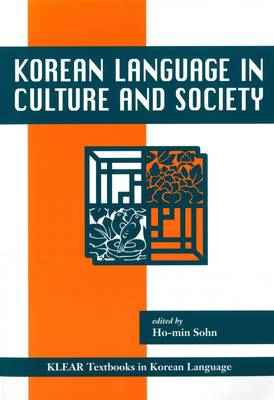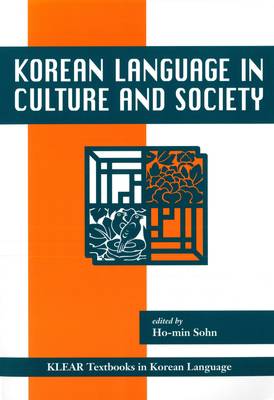
- Retrait gratuit dans votre magasin Club
- 7.000.000 titres dans notre catalogue
- Payer en toute sécurité
- Toujours un magasin près de chez vous
- Retrait gratuit dans votre magasin Club
- 7.000.0000 titres dans notre catalogue
- Payer en toute sécurité
- Toujours un magasin près de chez vous
Korean Language in Culture and Society
51,45 €
+ 102 points
Description
Intended as a companion to the popular KLEAR Textbooks in Korean Language series and designed and edited by a leading Korean linguist, this is the first volume of its kind to treat specifically the critical role of language in Korean culture and society. An introductory chapter provides the framework of the volume, defining language, culture, and society and their interrelatedness and presenting an overview of the Korean language vis-à-vis its culture and society from evolutionary and dynamic perspectives.
Early on, contributors examine the invention and use of the Korean alphabet, South Korea's "standard language" vs. North Korea's "cultured language," and Korean in contact with Chinese and Japanese. Several topics representative of Korean socio-cultural vocabulary (sound symbolic words, proverbs, calendar-related terms, kinship terms, slang expressions) are discussed, followed by a consideration of Korean honorifics and other related issues. Two chapters on Korean media, one on advertisements and the other a comparative analysis of television ads in Korea, Japan, and the U.S., follow. Finally, contributors look at salient features of the language, narrative structure, and dialectal variation. All chapters are accompanied by a set of student questions and a useful bibliography. A beginning level of proficiency in Korean is sufficient to digest the Korean examples with facility, making this volume accessible to a wide range of students. Contributors: Andrew S. Byon, Sungdai Cho, Young-A Cho, Young-mee Y. Cho, Miho Choo, Shin Ja J. Hwang, Ross King, Haejin Elizabeth Koh, Jeyseon Lee, Douglas Ling, Duk-Soo Park, Yong-Yae Park, S. Robert Ramsey, Carol Schulz, Ho-min Sohn, Susan Strauss, Hye-Sook Wang, Jaehoon Yeon.Spécifications
Parties prenantes
- Editeur:
Contenu
- Nombre de pages :
- 284
- Langue:
- Anglais
- Collection :
- Tome:
- n° 19
Caractéristiques
- EAN:
- 9780824826949
- Date de parution :
- 31-12-05
- Format:
- Livre broché
- Format numérique:
- Trade paperback (VS)
- Dimensions :
- 177 mm x 249 mm
- Poids :
- 589 g

Les avis
Nous publions uniquement les avis qui respectent les conditions requises. Consultez nos conditions pour les avis.





